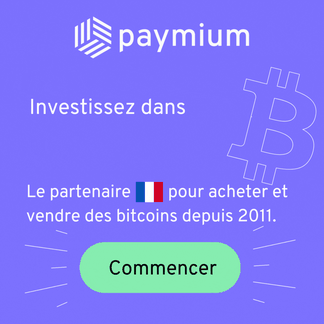
Co-founder of Pandora Core, a company that is developing products on the Bitcoin and Lightning protocols, Olga Ukolova coordinates the activities of the LNP/BP Standards Association around the RGB, Storm and Prometheus protocols.
Could you introduce yourself? (your background, your first meeting with Bitcoin…)
My name is Olga Ukolova, I’m a Medical Doctor and a neuroscientist by my background. I’ve always been obsessed with the idea of finding out how a human works, what limitation he has and eventually, what to do in order to overcome those limitations and become immortal. To me immortality means to become ultimately free and sovereign, and regardless poetic connotation, not something impossible, but simply an ambitious and complex goal that is nonetheless – reacheable. As you can see from my brief definition, the core pillars of my approach lie in individualism, freedom and sovereignty, as otherwise, what’s the point of living forever if you can’t understand who you are or will spend your immortality in eternal jail?
My discovery of Bitcoin can probably be divided into 2 parts: how I found out of its existence and how I actually started working with it. First story is short – many years back there was a meetup of Bitcoin Foundation Ukraine in Kyiv where a couple of my friends gave talks on Bitcoin, blockchain and many other topics. This is where I got to know about Bitcoin. I liked it first and foremost because of its philosophy and core values, but for some time I hadn’t had a clue of what one can do with it, except for buying it as money and speculating/trading it. The second story started sometime later. Me and a group of like-minded people, started a project of building a platform for censorship-resistant and scalable AI computations (as we need to transfer ourselves to non-biological carries in order to get rid of human body limitations, right?). We started looking into building it ‘on blockchain’ and, of course, fell for Ethereum’s claim of it being a world decentralized supercomputer. With time we understood, that even if Ethereum was a super computer (which, of course, it wasn’t), it was lacking one core parameter that we needed – resistance to censorship (I’m skipping bad design decisions, wrong choice of programming language and all other flaws it also has). The only tech that had that quality was Bitcoin. This is how my re-introduction happened.
So, my colleagues and I started learning more about Bitcoin and what it was lacking for our initial idea to be implemented. In 2019 we got to know about Giacomo Zucco’s and Peter Todd’s idea of RGB, at the time described briefly as ‘assets over Lightning’. We saw huge potential behind it and much beyond the use case of assets/tokens and understood that it can be the thing that was lacking for us. So, we started building it. For managing the effort, a Swiss non-profit called LNP/BP Standards Association (LNP/BP stands for Lightning Network Protocol/Bitcoin Protocol) was established, where Bitfinex/Tether Inc., Fulgur Ventures, my company Pandora Core and other players became funding members and key drivers of the development. Most of the code that is present in the repos now was designed and written by my colleague, co-founder of Pandora Core and Chief Engineer of the Association, Maxim Orlovsky, in tight cooperation with great minds of the industry, such as Giacomo Zucco, Peter Todd, Andrew Poelstra, Peter Wuille and many others. The main purpose of the Association is to create free (as in freedom) technologies and tools that would enable talented developers to fulfil their ambitions in building self-sovereign and individual-centric world. Another goal of its activities is no enable new monetization models on top of bitcoin, to make more more businesses appear in the field and become profitable. One of the companies that is currently building products on top of the LNP/BP tech stack is Pandora Core. Besides funding the effort and driving the development of LNP/BP protocols (RGB, Storm, Prometheus), we are building commercial products, that set an example of what can be done with the developed tech stack from business perspective, which tools a sovereign individual needs to have, how they can be built and monetized. We recently released the first RGB-enabled wallet called MyCitadel (currently available on Testflight) and also a professional asset issuance and management tool (not just for RGB assets, but also for Bitcoin) called Bitcoin Pro. And more to come 🙂
What’s your role inside the LNP/BP Standards Association?
Myself, I’m running operations and relations with developers and community for the Association’s activities. Documentation writing, talking to projects interested in supporting RGB, visual representation, marketing activities, websites running (like the FAQ one), finding talents that work to work with us, etc.
About RGB:
According to my understanding, RGB is a second, even third layer protocol, which is based either directly on Bitcoin or on the Lightning Network and which allows the creation of smart contracts without the limitations inherent in any « blockchain » structure, namely the lack of scalability and confidentiality. Does this first definition suit you? What should be added to make it more accurate?
RGB is a client-side validated smart-contract and bearer rights system that can be used both on L1 and L2 on top of bitcoin. It leverages strong sides of Bitcoin and Lightning, while adding more privacy, scalability to the equation and giving more power and control to the individual.
How could we explain how RGB works without being too technical or too long?
Probably everything that Ethereum community/projects claimed to build and failed to deliver, with added high level of privacy and cypherpunk values in the core 🙂
As I understand it, on RGB nothing is « on-chain » except for a few anchors in the Bitcoin ledger. But a node at the origin of a smart contract can very well disappear or be offline. How to build something durable and reliable on RGB if data can disappear overnight?
RGB uses a Client-side validation paradigm and a lot of cryptography magic to make the following idea true: if you are not and owner of some asset, you will probably not even know about the asset existence, but if you own the asset – you store all the metadata on it, you are able to verify it, and no one can take it away from you. A genesis of the asset cannot disappear – you either publish it/make it visible from the beginning, or you keep it unnoticed to the external observer. So, if you have an asset, you will always have it. If you don’t – you will never even know the asset existed.
Who decides today on the development and evolutions of the RGB protocol?
The LNP/BP Standards Association.
Unlike the Lightning Network, whose specifications were written by different players who each developed their own implementation from the start, RGB only relies on a single implementation. Will other implementations emerge to open up the project even further?
From our side we have been doing everything we can do make RGB as modular as possible. Our approach was and stays ‘reuse as much existing solutions as possible in order to not reinvent the wheel’. It turned out that LN has a lot of flaws in implementation of nodes and some other parts and we couldn’t reuse it as much as we wanted, so the only way for us to go was to create our own implementations of various things (though still reusing many things and following best practices). Everyone who’s interested in adding RGB support, is free to do so: we have SDKs, are preparing docs (though the code itself is very well documented) and much more to help others do it.
At what stage is the RGB protocol today? What are the current developments? What is the roadmap?
Well, RGB is alive and actively kicking 🙂 Though we do not yet recommend anyone to use it on Bitcoin Mainnet, I think we will see it happening this year already, because the testnet activity is pretty high.
Basic functionality is ready (mostly the on-chain one, including the support of Taproot, Simplicity and many other upcoming improvements of the Bitcoin ecosystem). We have first commercial products working on testnet (Bitcoin Pro, MyCitadel), we also launched RGBex.io – a sort of explorer of RGB assets (bit not the one which chain analysis uses for their goals). We are currently working on adding and improving the Lightning functionality (LNP Node), NFT and Digital Identity use cases, integrating RGB into other projects (very excited about Bitfinex issuing Tether on RGB in the future) and much more.
We have weekly dev calls, every Wednesday at 5pm CET, so everyone is always welcome to join them to stay updated on our progress, discuss questions and ideas, see demos etc. This is the link to the call (always the same) https://meet.jit.si/RGBcall1
Let me know if there is anything you’d want me to elaborate on.
Links that can be helpful to you for referencing or finding more information on RGB, LNP/BP Standards Association and Pandora Core:
– RGB FAQ (non-technical): rgbfaq.com
– Association’s Github: https://github.com/LNP-BP
– Association’s YouTube channel: https://www.youtube.com/c/LNPBP/
– Presentation slides from the YouTube channel and other talks: https://github.com/LNP-BP/FAQ/tree/master/Presentation%20slides
– Info on dev calls:
https://github.com/LNP-BP/devcalls/wiki/Devcallshttps://www.rgbfaq.com/community/developer-calls
– RGB Github: https://github.com/rgb-org Bitcoin Pro: https://github.com/pandoracore/bitcoin-pro
– MyCitadel wallet: https://github.com/mycitadel – https://testflight.apple.com/join/ZL24hlk7
– Our Nodes, Core Libraries and products on Bitcoin Wiki: en.bitcoin.it/wiki/Taproot_Uses
Socials
– Association
https://twitter.com/lnp_bp
https://t.me/lnp_bphttps://www.linkedin.com/company/lnp-bp
– RGB
https://t.me/rgbtelegram
https://www.reddit.com/r/RGB_protocol/
– MyCitadel
https://twitter.com/mycitadel_io
https://t.me/mycitadel
